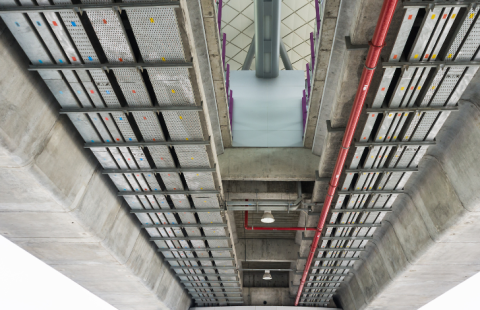Blog
- Home
- Cable Tray
- Cable Tray vs. Conduit: Navigating the Labyrinth of Wireways

Cable Tray vs. Conduit: Navigating the Labyrinth of Wireways
Introduction
When embarking on electrical projects, choosing the right method to route your precious wires can be a bewildering task. Two prominent contenders emerge: cable trays and conduits. Both offer distinct advantages and disadvantages, leaving you wondering, “Which way should the current flow?” Fear not, electrical adventurers! This guide dissects the intricacies of cable trays and conduits, empowering you to make an informed decision.
Cable Trays: The Open Highway for Wires
Imagine a metal catwalk for your cables, offering easy access, ventilation, and flexibility. That’s the essence of cable trays. Their advantages include:
Lower Cost: Installation and materials are generally cheaper compared to conduits.
Easy Installation and Maintenance: Open access simplifies adding, removing, or inspecting wires.
Excellent Ventilation: Heat dissipation prevents overheating and cable damage.
Space Efficiency: Multiple cables can be bundled together, maximizing space usage.
Flexibility: Adaptable to changing layouts with minimal disruption.
But don’t get carried away on this open-air express. Cable trays also have disadvantages:
- Physical Protection: Exposed to dust, debris, and potential physical damage.
- Not Grounded: Requires additional grounding measures for safety.
- Limited Security: Less secure against tampering or accidental contact.
- Aesthetic Concerns: Visible tray systems might not be ideal for all environments.
Conduits: The Armored Tunnel for Wires
Think of conduits as protective tubes encasing your cables. They offer enhanced security and environmental protection but come with trade-offs. Their advantages include:
- Superior Physical Protection: Shields wires from dust, debris, and physical damage.
- Grounding Integration: Conduits themselves can be grounded, simplifying the process.
- Enhanced Security: Tampering or accidental contact is less likely.
- Aesthetic Flexibility: Conduits can be hidden within walls or ceilings for a cleaner look.
However, conduits also have disadvantages:
Higher Cost: Installation and materials tend to be more expensive than cable trays.
Difficult Installation and Maintenance: Pulling wires through conduits can be time-consuming and challenging.
Limited Ventilation: Heat buildup within the conduit can be a concern.
Less Space Efficient: Requires more space compared to bundled cables in trays.
Less Flexible: Modifications or additions to the wiring system can be more difficult.
So, When to Choose Which?
The answer isn’t a one-size-fits-all. Consider these factors:
Environment: For harsh environments or areas requiring physical protection, conduits reign supreme.
Security: If security is paramount, conduits offer an extra layer of defense.
Aesthetics: For exposed areas where appearance matters, conduits offer a cleaner look.
Budget: If cost is a major concern, cable trays might be the more economical option.
Accessibility: If frequent maintenance or modifications are anticipated, cable trays provide easier access.
Local Codes: Always consult your local electrical codes for specific requirements.
Conclusion:
Remember, consulting with a qualified electrician can help you navigate the complexities of your specific project and choose the optimal solution. Whether you prefer the open-air freedom of cable trays or the armored security of conduits, let this guide illuminate your path to a successful electrical project!


